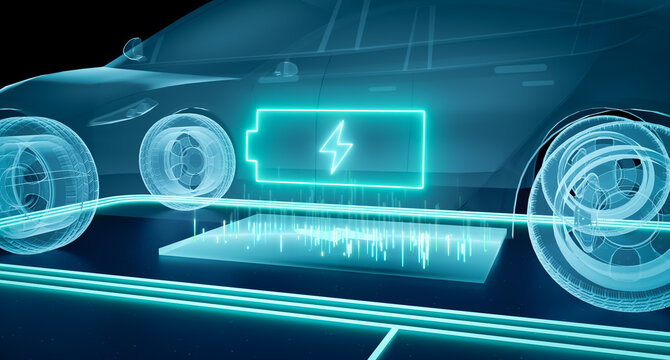In a world where electric vehicle (EV) sales are predicted to reach 40% of total car sales by the end of 2023 (Bloomberg Green), the race to innovate charging solutions has led to an exciting development—wireless EV charging. Imagine a future where your car charges itself as you navigate through the city, eliminating the need to plug in at every stop. This revolutionary technology is not only convenient but also pivotal in reshaping urban infrastructure. In this article, we’ll explore how wireless EV charging is transforming urban environments, the technology behind it, and what the future holds for cities worldwide.
Understanding Wireless EV Charging
What is Wireless EV Charging?
Wireless EV charging, also known as inductive charging, allows electric vehicles to be charged without a physical connection. Instead of plugging into a charger, vehicles are equipped with a receiver pad that interacts with a transmitter pad embedded in the road or parking space. This technology uses electromagnetic fields to transfer energy from the grid to the vehicle’s battery.
How Does It Work?
- Inductive Charging Pads: These are installed both on the ground and in the vehicle. As the car aligns with the pad, energy is transferred.
- Resonant Inductive Coupling: This is the process of transferring energy between two coils tuned to a mutual frequency.
- Efficiency Rates: According to MIT Technology Review, current systems can achieve efficiency rates of up to 90%, comparable to wired charging.
Benefits of Wireless Charging
- Convenience: No need for cables, reducing the hassle and potential tripping hazards.
- Reduced Wear and Tear: Less physical interaction means fewer mechanical failures over time.
- Scalability: Ideal for high-traffic urban areas, such as taxi ranks or bus stops.
The Impact on Urban Infrastructure
Transforming Cityscapes
Integrating Charging Pads
Cities like Oslo and London are already pilot testing street-embedded charging pads, aiming to reduce street clutter and enhance the aesthetics of urban environments. This integration could potentially transform every parking spot into a charging station, significantly increasing charging availability.
Supporting Public Transport
Public transport is set to benefit immensely from wireless charging. In cities like Stockholm, buses equipped with wireless charging technology are cutting down on refueling times, thus maintaining more consistent schedules and reducing emissions.
Economic and Environmental Impacts
- Cost-Effectiveness: While the initial setup costs are high, the long-term savings on maintenance and fuel make it economically viable.
- Emission Reductions: As more vehicles opt for electric power, cities will see a significant decrease in pollution levels.
Practical Guide to Wireless Charging
How to Charge Your EV Wirelessly
- Equip Your Vehicle: Ensure your EV is compatible with wireless charging technology.
- Locate Charging Spots: Use apps like PlugShare or ChargePoint to find wireless charging locations.
- Align and Park: Simply park your vehicle over the charging pad and let technology do the rest.
Where to Buy Wireless Charging Technology
For those interested in upgrading their home charging setup, brands like Plugless and WiTricity offer residential solutions. These can be purchased directly through their websites or authorized dealers.
What to Compare
When considering wireless charging systems, compare the following:
- Charging Speed: Check kW ratings to ensure your vehicle charges efficiently.
- Installation Costs: Factor in the cost of installing ground pads at home.
- Compatibility: Confirm your EV model supports wireless technology.
Conclusion: The Future of Urban Mobility
Wireless EV charging is set to become a cornerstone of modern urban infrastructure, offering a seamless and efficient way to power the electric vehicles of tomorrow. As cities continue to adopt this technology, we can expect cleaner, quieter, and more efficient urban environments. Are you ready to embrace this change? If you’ve experienced wireless charging, share your thoughts and predictions for its impact on urban life. Looking ahead, the focus will likely be on increasing the adoption rate and improving the efficiency of these systems, driving us closer to a truly electrified urban future.
Wireless EV charging is not just a technological advancement; it’s a vital step towards sustainable urban living. With cities worldwide investing in this infrastructure, the revolution is well underway. Join the conversation and explore how this technology could transform the way you commute.

